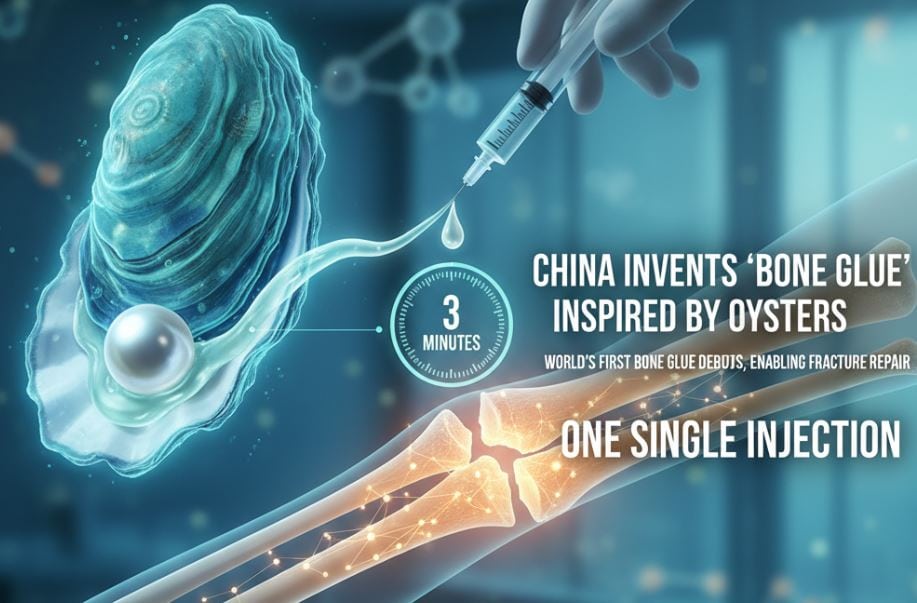By Web Desk lahore
Copyright pakobserver

WENZHOU – Fractures have long been key challenge for surgeons as traditional methods often require large incisions, screws, and plates, with surgery lasting hours and sometimes failing to restore precise alignment.
Tiny bone pieces can be lost or fail to heal, causing long-term complications and impaired mobility. A team of Chinese researchers developed an innovative bone adhesive, dubbed “Bone 02,” that could transform the treatment of complex fractures. Inspired by the natural adhesion of oysters, this breakthrough offers a minimally invasive alternative for fractures that are difficult to repair with traditional metal fixation.
The modern surgical techniques have dramatically improved fracture outcomes, comminuted fractures where bones shatter into multiple small fragments, continue to pose significant challenges. Traditional fixation methods often fail to achieve precise alignment, and tiny bone fragments may be lost or resorbed, leading to delayed healing, bone loss, or nonunion.
The concept of directly bonding bones emerged in early career of Professor Fan Shunwu and was later advanced by Dr. Lin Xianfeng, a post-90s associate chief physician. Lin’s inspiration came during visit to his coastal hometown of Wenzhou, where he noticed clusters of oysters tightly adhering to a bridge despite constant waves. This natural adhesion sparked the idea of creating a medical adhesive capable of bonding bone fragments in the human body’s wet environment.
The name Bone 02 playfully references popular “502 glue,” symbolising strong bonding potential and broad application in orthopedics. Its clinical value has already been demonstrated in more than 150 cases nationwide. In one notable case, a young worker suffered a comminuted distal radius fracture.
Traditionally, treatment would require a large incision to implant screws and plates, with risks of tendon adhesion, nerve injury, and possible secondary surgery for removal. Using Bone 02, the team achieved precise fixation of the bone fragments in just three minutes through a minimally invasive 2–3 cm incision. Three months later, follow-up revealed excellent healing and full restoration of wrist function, without complications.
The team plans to explore applications beyond fractures, including dental implants and minimally invasive spinal fixation, potentially extending Bone 02’s impact across multiple fields of medicine.
From lab bench to operating room, Bone 02 exemplifies China’s growing capability in medical innovation, offering new hope for patients with complex fractures and marking a potential revolution in orthopedic care.



